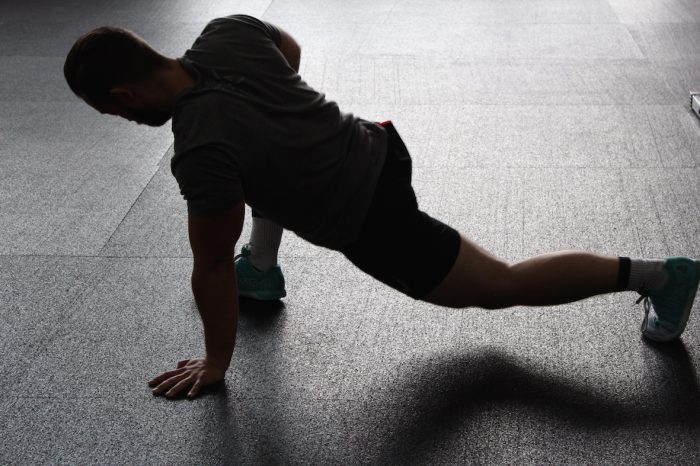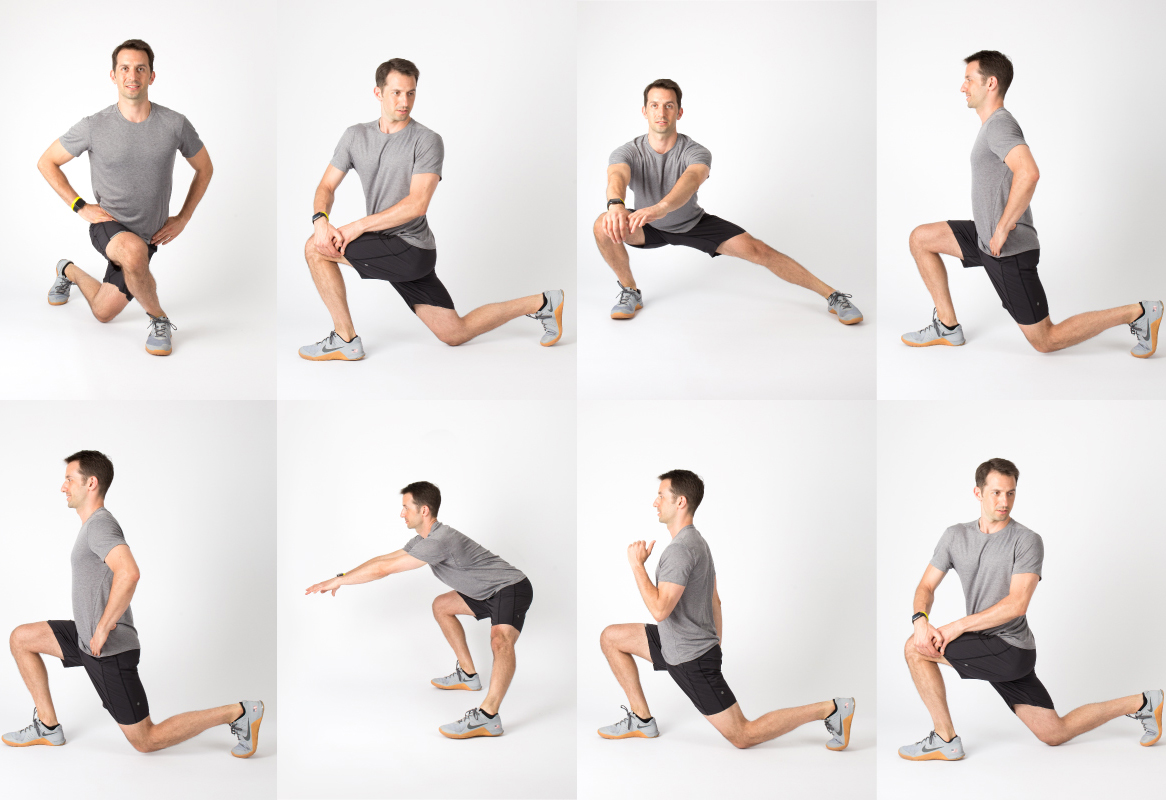When most people think ‘Flexibility’, they think ‘Stretching’. The idea that making the muscles ‘longer and looser’ is an essential part of warming-up, cooling down, and enhancing performance for a sport such as squash is one of those ideas that is pretty entrenched in most players minds.
There is rather more to the topic however, and in this 2 part article we’ll take a look at the truth behind the generally accepted wisdom of the benefits of flexibility training and the different types of ‘stretching’, and see how it all relates back to the squash player.
Perhaps the best place to start in part 1 of this article is where most people start their sessions, and where possibly the most substantial misappropriation of stretching/flexibility techniques occur – the warm-up.

Stretching has long been included as part of the warm-up for athletes of all kinds, particularly for sports such as squash that require a lot of twists and turns and explosive movements. The long held belief is that stretching (and by ‘stretching’ here I mean traditional ‘static’ stretching such as pulling the heel to the backside and holding for 20-30secs to stretch the quads, leaning forward to touch the toes for the hamstrings etc.) will somehow help prevent against injury.
Unfortunately, there is very little reliable evidence that this is the case – various studies have looked at different protocols, different outcomes, and have investigated different areas of effect, with very little support for this supposed ‘injury-protection’ effect. Indeed, some studies have even suggested static stretching before sport/exercise could possibly INCREASE the risk of injury.
Such confounding findings that sit in direct opposition to deeply entrenched beliefs certainly muddy the water when investigating flexibility as a topic, and this immediately highlights part of the problem with exploring stretching efficacy – there are a ton of articles from various ‘experts’ out there, but very little of a conclusive or scientifically rigid standard. Despite popular belief, there are precious few properly controlled research studies that have shown any kind of an improvement in injury rates from incorporating static stretching before activity.
Before we go further, it is important here to differentiate between statically ‘stretching’ and ‘warming-up’. A lot of people often think of the two as necessarily inter-related, but this isn’t the case. Warming-up is the action of going through a series of graduated actions and movements to increase blood flow to the relevant muscles, raise the core/muscles temperature, and to physically and mentally prepare the body for exercise. Warm-ups have been shown to reduce a number of risk factors related to sport/exercise, and to enhance subsequent athletic performance. Warming-up before your training/matches has a host of proposed benefits, and is certainly something that is to be encouraged.
So if static stretching has shown no benefits as part of/in place of a warm-up, what should we be doing to prepare our joints and muscles instead? What most good warm-up protocols include now instead, is an element of ‘Dynamic Flexibility’ work. The goal of dynamic flexibility work is to increase the active range of motion around a joint, taking various bodyparts through a sports-specific series of movements to increase blood flow to these areas, to mobilise and engage nerves/muscles (sometimes through the use of additional tools such as resistance bands and foam rollers), and to more naturally prepare them for the actions that will be undertaken in the upcoming sport/activity.
So for squash players multi-planar actions like lunges, knee lifts, and controlled leg swings/thrusts far more accurately replicate the demands of the game on the composite muscles/joints, and are a much more specific and functional way of preparing the body for exercise than standing still in one spot attempting to statically lengthen a muscle by holding it for prolonged periods in one or two strict directions.
We’ll look at static stretching and its variants as part of a general flexibility programme in part 2 of this article, but certainly in terms of ‘warming-up’ traditional static stretching has little to no place then – an oft-used analogy in the fitness world is that ‘stretching your muscles to warm them up, is like trying to cook a steak by pulling on it’. Muscles are warmed, engaged, and prepared for exercise through sport-specific activity, not standing still and trying to manually stretch their length.

It’s important to note that the range of motion movements that are included as part of a warm-up should be ‘dynamic’, and not ‘ballistic’ however. Ballistic stretching is that where movements are far faster and less controlled, often with more of a ‘bounce’ or rebound component (though ballistic stretching may have some benefits for specific sports/athletes). Dynamic mobility movements tend to be more exaggerated examples of actions inherent to the specific sport/activity, but are undertaken in a controlled progressive manner – e.g. lunge walking across the court as part of a warm-up for squash.
All that said, there are many players that still swear by including an extensive static stretching portion to their warm-ups. Some would argue that this element of routine is an integral part of their psychological preparation for a match, and there is certainly some merit to this point.
A warm-up has both a physical and a psychological basis, so if something helps prepare you mentally for training/matches and is an important part of your routine, it may be difficult to understand why it should just be suddenly dropped completely. Whilst there is some preliminary literature which suggests excessive static stretching as part of a warm-up can have detrimental effects in certain circumstances, if going through a few short specific stretches helps as part of your preparation then the psychological benefits may still have some potential overall value.
From a longer term perspective, the benefits of enhancing flexibility to reduce risk/frequency of injury is a different question, which will be discussed further in the second part of this article. Regardless, a couple of minutes of focus before playing/training will not ‘increase flexibility’ to any significant sustainable extent. Tight muscles/poor range of motion would need to be addressed separately, and cannot likely be adequately affected to any substantial degree as part of a 15min warm up before activity.
So in summary then, flexibility/stretching is obviously a huge topic with a wealth of opinions, preferences, and conflicting qualities of research. The purpose of this feature is to sift through what we actually know about the subject, and present recommendations to the squash player in line with the evidence. Despite what is tradition for many, the static stretching that a lot of players still use before games is a largely ineffective element of a proper warm-up, being non-specific to the task at hand and a rather inefficient use of time. There may be some psychological benefits, or momentary perceived relief from loosening off certain ‘tight spots’ (specific injury management and physiotherapist recommendations not withstanding) with a static stretch, but generally all of the available evidence points to the use of proper graduated warm-up protocols incorporating dynamic mobilisation movements that increase active range of motion specific to the sport/exercise at hand, as being the safest, most functional, and most beneficial to our pre-match/training routine.
In part 2 we’ll look at flexibility as part of an overall training programme, and what benefits stretching may have on longer-term health and performance.
Gary Nisbet
B.Sc.(Hons), CSCS, NSCA-CPT, Dip. FTST
Squashskills Fitness & Performance Director
Sign up to the SquashSkills newsletter
Get world class coaching tips, straight to your inbox!